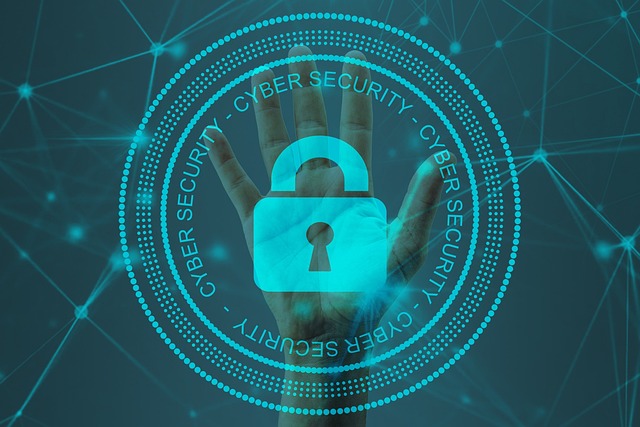In today’s highly connected world, organizations across all industries face growing cyber threats from hacking, malware, data breaches, and more. Hence, many need more in-house expertise to fully secure sensitive systems and data against attacks.
Cybersecurity consulting services fill this gap by assessing vulnerabilities, developing defense strategies, and strengthening foundations through ongoing management.
Here are five key areas where cybersecurity consultants deliver outsized impact to secure business success.
1. Identifying Security Gaps
The first step toward strengthening defenses involves a systematic assessment by consultants evaluating current infrastructure against known threats. Consultants utilize testing tools and audits to uncover the gaps presenting the greatest risks.
For instance, penetration testing simulates attacks to pinpoint vulnerabilities like outdated software lacking patches, insecure passwords allowing access to sensitive systems, insufficient logging enabling breaches to go undetected, and improperly configured networks allowing malware proliferation.
Ethical hackers employ tactics used by real-world bad actors to showcase flaws before criminals discover them.
Consultants also evaluate security governance by surveying employees through fake phishing attempts. By detailing which users clicked malicious links, consultants identify training needs to improve human firewalls against social engineering and injunction attacks.
Finally, security consultants audit existing safety protocols around data access, encryption, backup systems, endpoint security, and disaster recovery preparations against benchmarks. By understanding where organizations fall short in infrastructure, policies, and processes, Cybersecurity Consulting Services guide strategic roadmaps addressing under-protected assets.

2. Optimizing Defenses Through New Technology
After identifying risks and vulnerabilities, consultants help organizations strengthen defenses, leveraging modern security solutions to close gaps. Consultants stay on top of the latest protective innovations, from firewalls to specialized tools for needs, from data encryption to access management.
By maintaining technology expertise, consultants evaluate organizational requirements and map appropriate solutions fitting budget and risk parameters. For instance, they may deploy user behavior analytics to detect insider threats by analyzing access patterns, endpoint detection to isolate infected devices, intrusion prevention systems to block exploits, and tools enhancing visibility across cloud implementations.
Consultants also optimize technology configurations and integrations to maximize protections out-of-the-box without requiring extensive resources to implement manually. Reviewing policies and controls across layers ensures alignment into a cohesive security posture. Testing effectiveness post-implementation validates risk mitigation across attack vectors.
Upgrading tools requires financial resources and user adoption. Consultants quantify the return on investment through risk reduction to justify spending. Ongoing optimization also ensures technology investments provide maximum value over time as the threat landscape evolves.
3. Institutionalizing Security Policies and Processes
Notably, while attackers focus on exploiting technical infrastructure weaknesses, limited security policies and insufficient processes represent equally serious vulnerabilities. Consultants institute fundamental governance to enforce protections systematically companywide.
For example, consultants define password policies and access controls aligning rights and restrictions based on user roles. System administrators gain necessary permissions while average employees only access specific required applications. The least privileged access principles limit the damage if credentials become compromised.
Additionally, consultants formalize protocols for secure software development enforcing testing, architecture reviews, and code validations before deployment. Changing management processes also govern technical alterations to keep security intact. Organizations minimize their attack surface by design by infusing security across systems development lifecycles.
Likewise, incident response plans created with consultant guidance enable organizations to respond swiftly in case of a confirmed breach. Documented procedures coordinate containment, remediation, public communications, evidence gathering, and facilitating recovery. Preparing these fundamentals protects organizations during crises instead of making hurried decisions that adversely impact outcomes.

4. Training Employees
While blocking threats requires advanced technology protecting infrastructure perimeters, hackers increasingly target employees directly through phishing schemes seeking to steal credentials. With widespread security understanding by staff, sophisticated tools can shield businesses from social engineering attacks.
Consultants structure engaging training teaching non-technical employees how to strengthen human firewalls and recognize risks. Lessons emphasize common methods used in phishing attempts, such as urgent messages from authority figures requesting sensitive data or links to fake login pages capturing passwords. By modeling real-world attacks in safe environments, staff gain experience identifying subtle red flags to avoid manipulation.
In addition to phishing avoidance techniques, consultants educate employees on maintaining endpoint device hygiene to quarantine infection vectors. Staff learn the necessity of keeping software patched and avoiding suspicious downloads. Introducing multi-factor authentication for external-facing applications provides further protection should credentials become compromised by verifying identity through secondary devices.
5. Continual Assessment and Management

Also, while many organizations focus on security efforts around periodic auditing for compliance, consultants evangelize continuous assessments and ongoing crisis management to keep pace with threat evolution.
Hackers constantly update attacks exploiting new vulnerabilities and entry points. Maintaining current protections requires recurring system scans, infrastructure tests through simulated breaches, monitoring authentication attempts for anomalies, and responding to reported software vulnerabilities as vendors release patches. As networks change and expand with business growth, review ensures controls apply appropriately to new assets.
Consultants guide clients in executing regular evaluations through technology and supplement with manual oversight validating configured tools that operate as intended. Validating security functionality often needs to be improved through systems alone.
In addition to handling technical implementations, consultant management secures environments by enforcing adopted policies and processes through governance reviews. Accountability measures ensure staff understand expectations through training reinforcement and leadership messaging emphasizing security’s enterprise-wise priority.
Working with consultants provides continuous assessment and routine maintenance ensuring organizations do not lose ground as threats arise. Ongoing collaboration enables the development of new defenses before a disaster occurs.
Conclusion
Protecting modern organizations requires overcoming technical, policy, and workforce security challenges spanning infrastructure and human vulnerabilities. While many leaders recognize safeguarding data is imperative, businesses often need help tackling the breadth of ever-evolving threats.
Security experts and consultants fill gaps by conducting objective assessments, instituting current solutions, formalizing fundamental governance, training staff, and providing continual management needed to monitor controls and evolve defenses sustainably.
Author Profile

- Online Media & PR Strategist
- Blogger and Educator by Passion | CMO at ClickDo Ltd. | Editor in Chief of various English and German blogs | Summer Course Student at the London School of Journalism.
Latest entries
 Software19th December 2024Understanding Entity Resolution: A Comprehensive Guide
Software19th December 2024Understanding Entity Resolution: A Comprehensive Guide Software27th July 2024The 6 Challenges to Overcome when Implementing Client Portals
Software27th July 2024The 6 Challenges to Overcome when Implementing Client Portals Cryptocurrency22nd July 202410 Best Investment Apps UK & Trading Apps UK With Effective Robo Advisors For Automated Investment
Cryptocurrency22nd July 202410 Best Investment Apps UK & Trading Apps UK With Effective Robo Advisors For Automated Investment Software21st May 20245 Best SEO Tools for Digital Marketing & Marketers
Software21st May 20245 Best SEO Tools for Digital Marketing & Marketers

